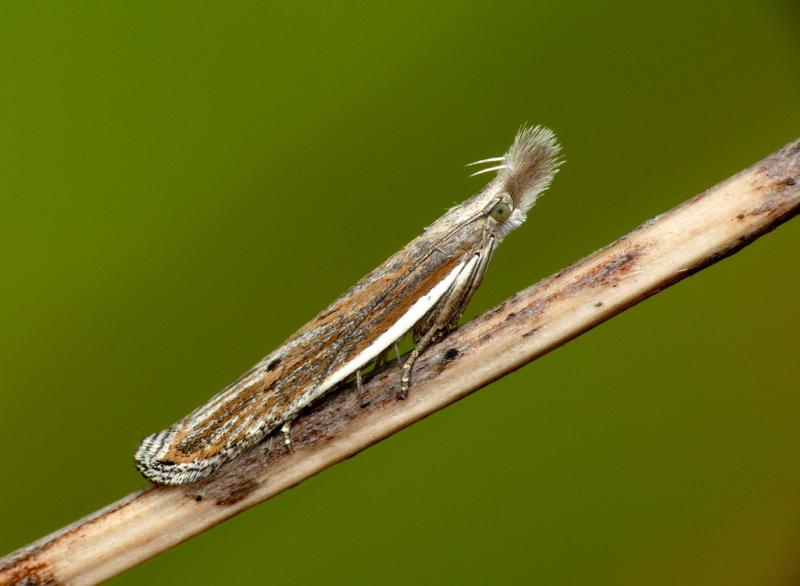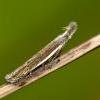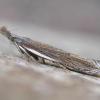35.091 Sophronia semicostella (Hübner, 1813)
Status and Distribution
Local, occasionally locally common, in southern and central England, local to very local in northern England and Wales. Apparently absent from most of south western England and south western Wales. Not recorded from Scotland, Ireland, the Isle of Man or the Channel Islands.

Provisional map
Foodplant and Larval Feeding Signs
The foodplant is unknown in Britain. In Europe it is reported to be associated with Anthoxanthum odoratum (sweet vernal grass), Poa alpina (alpine meadow-grass), Dianthus, Silene and Artemisia.
Habitat
Chalk downland with short turf, dry heathland, vegetated shingle, disused gravel pits, dry coastal grassland, edges of golf courses and dry acidic grassland. Also a few reports from mossland (presumably in drier areas) but specific details unknown.
Finding the Moth
Larva: unknown.
Adult: easily disturbed from amongst short turf on warm days, flies at dusk and comes readily to light.
Similar Species
A distinctive species which might be confused with darker forms of the superficially similar but larger Oecophorid moth Pleurota bicostella, which flies slightly earlier in the year.
P. bicostella has larger forward projecting palps, the white costal streak extends almost to the wing apex (to two-thirds in S. semicostella), the basal half of the forewing is pale greyish but with a variable ammount of buffish brown (wholly pale brown in S. semicostella) and lacks the distinctly banded cilia of semicostella. There appears to be some overlap in habitat use although P. bicostella is usually associated with damper areas.
Sophronia humerella is much smaller and has a much broader costal streak from the base of the forewing to three-quarters. The few old records of this species in Britain are now considered doubtful and it has been removed from the British list.
Single-brooded from early June to early August.
Earliest: 13th May 2000 (VC9).
Latest: 31st August 2001 (VC52).


